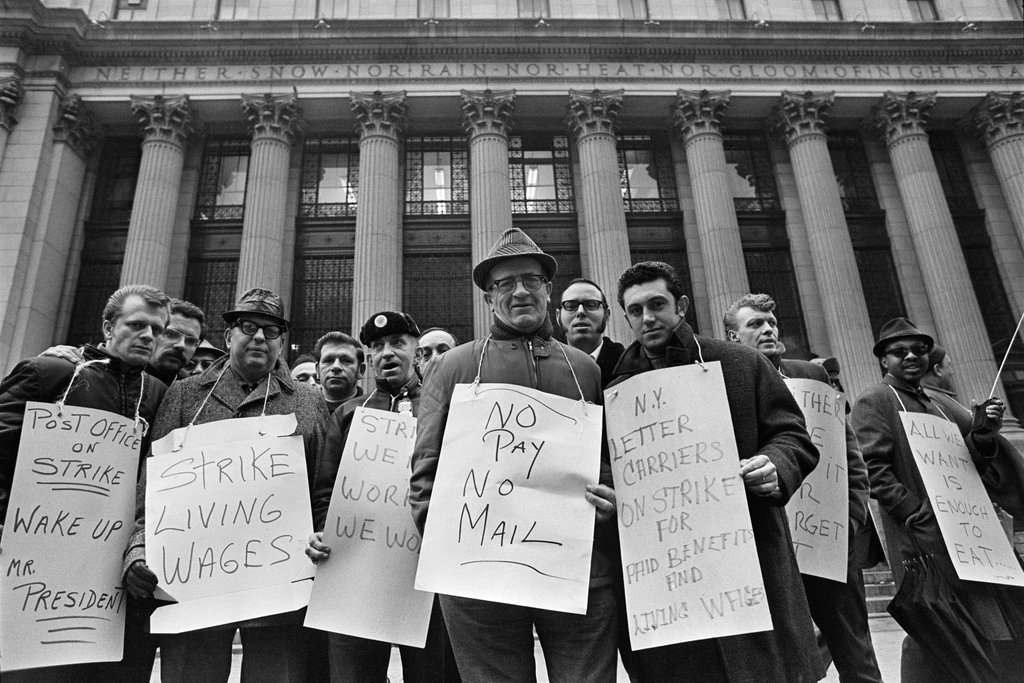The Indian postal department, which is the largest postal network in the world, seems to be in utter chaos after the proclamation of an indefnite strike by various postal workers unions. Although letters are no more widely used as a medium to communicate, thousands of passports, job appointment letters are all awaiting delivery. Parcel services through the RMS (Railway Mail Services) has also stopped. The workers are in the streets demanding justice for the under paid GDS (Gramin Daak Sevak) staff and to implement the Kamlesh Chandra committee recommendations. The ongoing strike for the last eleven days has certainly caused discomfort to the public, but the exploitation of more than 2.5 lakh GDS staff by the Government of India soon needs to come to an end.
 The GDS workers are the back born of the Indian Postal department. In 1959, the Government of India had ordered for the recognizing of Extra Department (E.D) agents (later renamed as GDS) as civil servants, but the order was revoked after the shadow of a decree from the Madras High Court. Later in the Supreme Court judgement on 22nd April 1977, the court clearly stated that “E.D Agents have been declared as holders of civil posts for the purpose of protections and safeguards in article 311(2)” but little effort is put by the government to improve the living standards of the GDS workers. During the fifth pay commission in 1995, Indian government formed a committee headed by Justice Charanjith Talwar to study the grievances of GDS workers, massive struggles were made for the implementation of the committee report during that time, but it didn’t bear fruit.
The GDS workers are the back born of the Indian Postal department. In 1959, the Government of India had ordered for the recognizing of Extra Department (E.D) agents (later renamed as GDS) as civil servants, but the order was revoked after the shadow of a decree from the Madras High Court. Later in the Supreme Court judgement on 22nd April 1977, the court clearly stated that “E.D Agents have been declared as holders of civil posts for the purpose of protections and safeguards in article 311(2)” but little effort is put by the government to improve the living standards of the GDS workers. During the fifth pay commission in 1995, Indian government formed a committee headed by Justice Charanjith Talwar to study the grievances of GDS workers, massive struggles were made for the implementation of the committee report during that time, but it didn’t bear fruit.
India is not the first nation to witness widespread agitation from the postal workers. In the year 1970 during the tenure of Richard Nixon, the 37th president of the United States of America (USA), the country was rocked by the unassailable struggle by the postal workers. President Nixon’s order to ‘get back to work’ was violated and that outrage erupted to different parts of the nation by which the workers were able to procure their demands.
But in the world’s largest democracy,majority of postal workers live a miserable life even in the 21st century. As part of the seventh pay scale commission, Kamlesh Chandra Committee was appointed to look into the matter by the central government. The major recommendations of the report which was submitted on November 16 2015 involves an increase in the minimum wage of GDS workers to RS 10000/- per month, and maximum pay up to RS 35480/- per month. A provision for 26 weeks of maternity leave for women and an introduction of education allowance for children of the GDS worker up to RS 6000/- per annum. The minimum working hour is recommended to be increased from three to four hours and point system of workload for Branch Post Masters (BPM) to be abolished.

The postal workers unions like AIPEU (All India Postal Employees Union)GDS, FNPO(Federation of National Postal Organistions), AIDGSU(All India Gramin Daak Sevak Union) and other regional postal organisations of various states are in the forefront of this ongoing battle against the government’s lack of interest in the implementation of the report. ”The strike is going on for the last ten days, no positive response has been given by the postal department or the central government. Even after waiting for 18 months, the seventh pay scale amendments hasn’t been implemented, while for all other public sector departments it was implemented within a period of 8 months” told P. Panduranga Rao , General Secretary of AIPEU-GDS to Indian Ruminations(IR). SS Mahadeviah, the General Secretary of AIGDSU told IR that “..discrimination is happening in all aspects of a GDS worker’s life. ‘Equal work Equal pay’ is not followed, we are doing 8 hours work and we need 8 hours pay. The allowances are too less as compared to a regular postal employee, even pension is denied for us”
There is also a strong criticism on major postal workers unions that they have not taken the grievances of GDS workers with all its seriousness, but ultimately the responsibility is upon the Department of Posts, The ministry of Communication and the Government of India.

Indian Prime Minister Narendra Modi promised the people of India that ‘Ache din aane wale hai’ which translates exactly the same as the assurance U.S President Richard Nixon gave to the postal workers that “better days are coming” in 1969 , a year before the postal strike in USA . History repeats itself! At a juncture when unemployment rate is increasing in the nation, the manner at which government deals with the public sector is alarming. Even after decades long struggle the situation of GDS workers remain unchanged. The present government is answerable to the pain that is suffered by the people of the country, the government is also obliged to implement the Kamlesh Chandra Committee recommendations at the earliest and put an end to the indefinite strike by the postal employees.





Good Report, Thanks